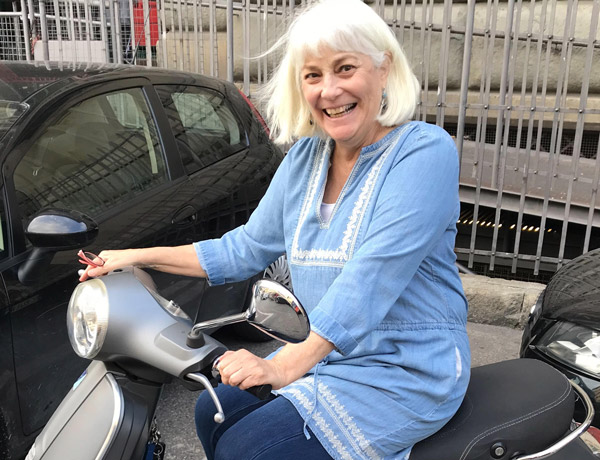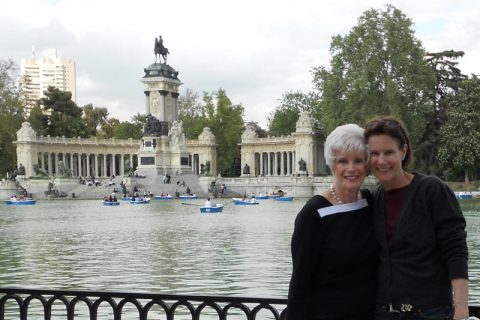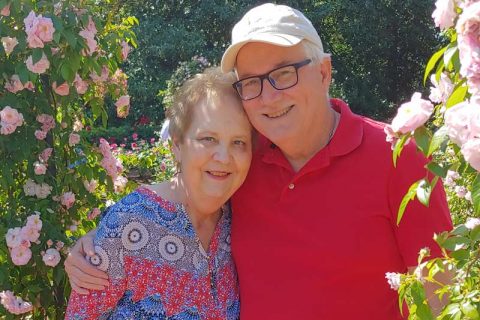My Trip of Gratitude to Italy After Surviving Mesothelioma

| Edited by Walter Pacheco | Last Update: 08/11/2025 | 5 Min Read
Twenty-two years ago, I saw the doctor’s mouth moving but couldn’t hear anything after he said the words, “I’m sorry.”
I was being diagnosed with malignant mesothelioma, a rare and terminal cancer.
As I stood, my arm slowly swiped and perfectly cleared the bottles, containers and outdated magazines from the examination room counter.
The calm doctor then offered me a tiny plastic cup of water.
I threw it at him.
It’s been 22 years since my aggressive surgery to remove the cancer, and I am alive and still kicking.
Was it easy? No, it was not.
But I am stronger for it, and I have a deeper appreciation for life.
Showing Gratitude During a Trip of a Lifetime
Prayers are much like flowers. They can add beauty to our world in spite of their many differences in appearance and form.
The prayers I learned as a child calmly ended each day with thanks and seemed to preface the new day with hope.
It was with this youthful outlook that I lit candles of gratitude and hope throughout the many cathedrals my husband and I visited on a magnificent trip to Italy in October 2018.
My gratitude, now adult in stature, went beyond the opportunity to visit the wonderful city of Florence, view Michelangelo’s David or visit the papal tombs.
Now, I offered prayers of gratitude in dozens of Catholic cathedrals for my mother and father of blessed memory. I lit candles in remembrance of Dr. David Sugarbaker, the thoracic surgeon and healer who performed my extrapleural pneumonectomy in 1996.
Not one of those beloved people was Catholic.
My husband and I visited the spectacular Great Synagogue of Rome the day after the horrific slaughter at Tree of Life Synagogue in Pittsburgh. Here, we also prayed for my husband’s family members who were lost to the Holocaust.
I prayed in gratitude for the memory of my parents. I prayed for hope and for good health for all.
After all, it was Dr. Sugarbaker’s preferred prescription — hope — that brought me to this living masterpiece called Italy.
This is where my affinity for the similarities between flowers and prayers comes in. Flowers grow in different soils and prayers emanate from different beliefs.
We don’t have to live where a native flower grows just to enjoy its appeal of color and form.
Likewise, we don’t have to belong to a particular religion to offer gratitude for the day and hope for tomorrow.
Thank you again, Dr. Sugarbaker, who talked so much about hope as part of the equation.

Sissy Hoffman is grateful for Dr. David Sugarbaker and others who made her trip to Italy possible.
Past Mesothelioma Surgery Made Exploring Difficult
We traveled through three of the 20 regions of Italy: Tuscany, Umbria and Lazio. In walled medieval towns, I faced daily physical limitations.
The narrow, cobbled streets combined with steep inclines and altitude were no match for my one lung and minimized diaphragm infrastructure — a product of my life-saving treatment.
Handrails were scarce. Even Ulysseus, our comedic bus driver, had to park miles from the ancient towns of Assisi, Cortona and Siena.
One time, I stayed on the bus as a preemptive strike, as I knew a walk (read hike) was not going to happen for me. Ulysseus played Italian pop tunes on the bus speakers and told me of his life as a driver and his all-female household in Rome.
Other times I tried walking slowly as my husband gently guided me from the back.
I stopped frequently to catch breath that was barely there. The group members, all new friends for life, even cheered for me once as I arrived high up on the “plateau above a vineyard clad plain.” At one point, I unfolded myself out of the tiny Fiat I had hitched a ride in Orvieto.
This physical challenge was not an unexpected situation, considering my past. The catalogue of small tour groups for ages 50 and older described the terrain and strenuous walking conditions accurately.
I decided to take the trip and deal with my limitations as they occurred. I improvised several times in the small medieval towns by hitchhiking. On the tour bus, I generously stretched out on two seats for a needed rest.
At night, we skipped the post-dinner frivolities and returned to the comforts of the hotel.
I felt good even though I developed heart failure issues 11 months earlier. The heart setback caused me to retire after 40 years of K-8 teaching.
A few cardiac procedures followed by daily workout routines of Tai Chi and water aerobics got me up and running again.
With a continued diet of prayer and hope, the exquisite Italian landscapes became my landscapes.
And what teacher doesn’t love a really good field trip?
Sissy Hoffman taught school for more than 40 years, half of them after her diagnosis of malignant pleural mesothelioma and aggressive surgery with Dr. David Sugarbaker, a mesothelioma treatment pioneer. As America’s longest living survivor, Hoffman has become a testament to the legacy of Sugarbaker, who died Aug. 29, 2018.






